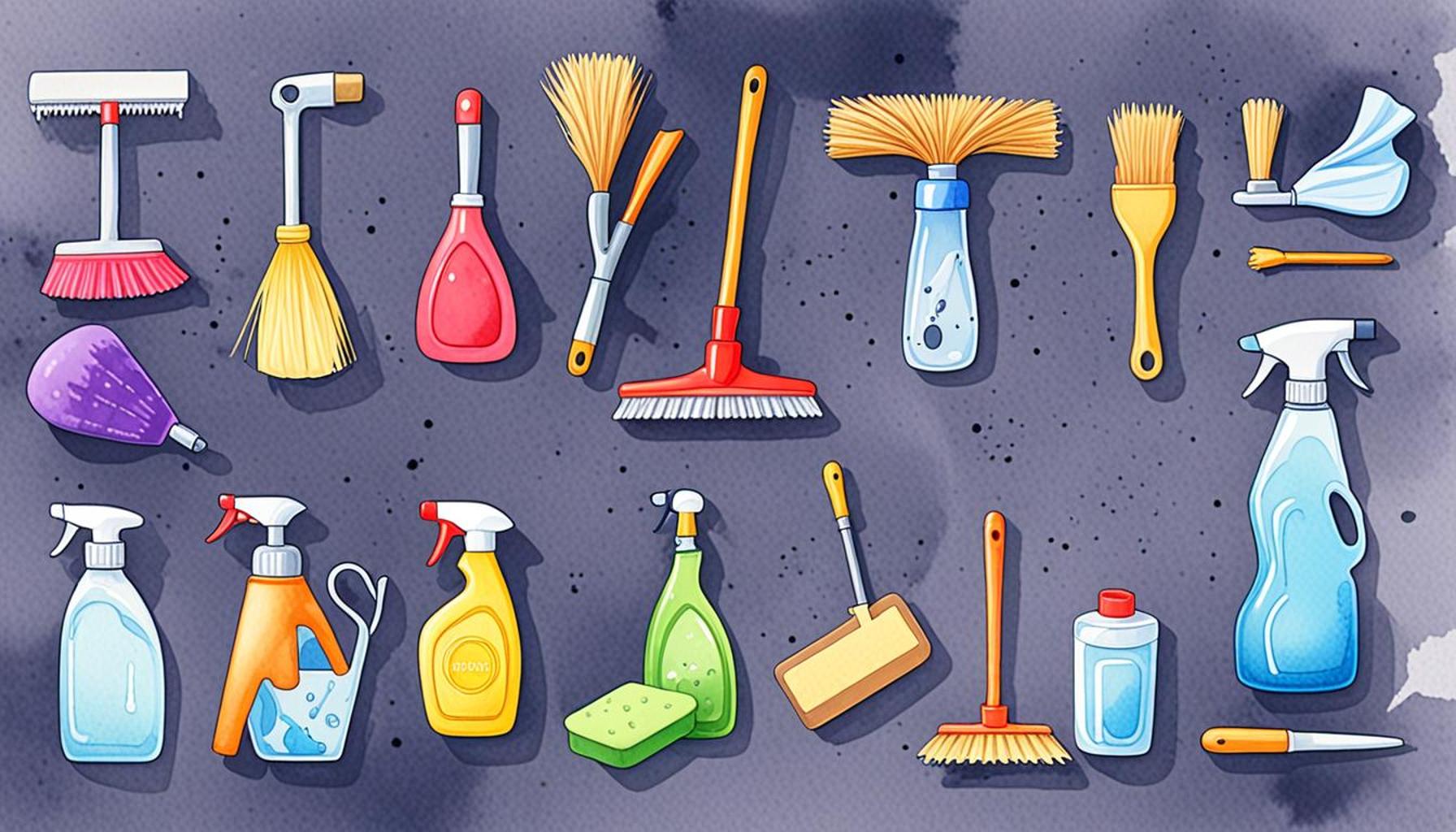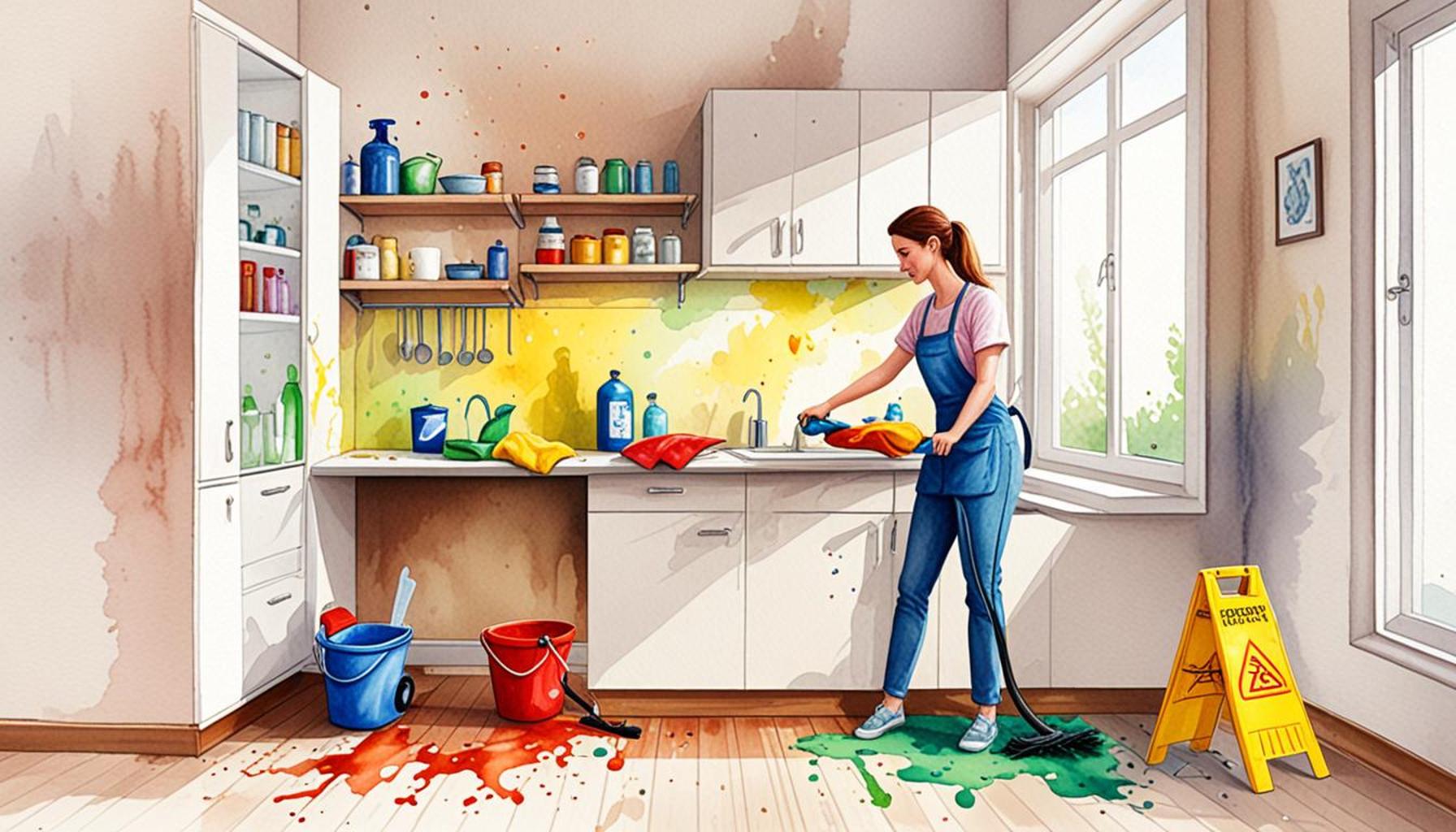Specific Cleaning Techniques for Delicate Surfaces: Ensuring Protection and Efficiency

The Importance of Proper Cleaning Techniques
Cleaning delicate surfaces is not just an aesthetic consideration; it is critical in preserving the integrity and functionality of various items. The balance between protecting the surface while maximizing cleaning efficiency can be an overwhelming task for many. Items such as antique wooden furniture, intricate glass ornaments, and sensitive electronic devices can require specialized care to avoid damage.
Understanding specific cleaning techniques tailored for different materials is crucial. For instance, let’s dive deeper into the cleaning methods for some common delicate surfaces:
- Glass and Crystal: When cleaning glass or crystal, it is essential to use microfiber cloths, which are soft and designed to reduce scratches. Additionally, a solution of equal parts white vinegar and water can provide a streak-free shine, effectively removing fingerprints and grime without leaving behind harsh chemicals.
- Wood: Wooden surfaces require a gentle approach with pH-neutral cleaners. Products like natural soap can safely lift dirt without stripping the wood’s natural oils. It’s also wise to avoid using excess moisture, as this can warp or split the wood. Regular dusting with a dry cloth can minimize the need for deeper cleaning.
- Electronics: For electronics, maintaining cleanliness is vital for performance. Using compressed air to blow out dust from keyboards or vents is effective. When wiping surfaces, alcohol wipes or lint-free cloths are recommended, as they can effectively disinfect without risking damage from harsher substances.
Every surface has unique characteristics that necessitate tailored cleaning methods. Implementing these techniques not only protects your investment but can enhance both the performance and appearance of your cherished items.
Moreover, neglecting these specialized cleaning approaches can result in costly damages. Delicate surfaces often require:
- Gentle approaches: Whenever possible, opt for less abrasive products that are specifically designed for the material you are cleaning. For instance, using a natural wood polish can enhance the finish while protecting against future wear.
- Careful tools: Utilizing specialized brushes or pads can prevent unintentional scratches or abrasions. For example, a soft-bristled paintbrush can be used to delicately remove dust from intricate carvings or electronics.
- Regular maintenance: Engaging in preventive care can significantly reduce the need for intensive cleaning sessions. For timber surfaces, occasional oiling can keep the wood hydrated and resistant to damage.
As you explore the specifics of cleaning techniques for delicate surfaces, you will uncover various strategies aimed at ensuring both protection and efficiency. Understanding these methods will not only safeguard your belongings but also elevate your overall cleaning efficacy, whether you are a professional cleaner or a DIY home caretaker.

DISCOVER MORE: Click here for time-saving cleaning tips
Understanding Unique Cleaning Requirements
When it comes to cleaning delicate surfaces, understanding the unique requirements of different materials is essential for achieving optimal results. Each type of surface has its own vulnerabilities, which necessitates a tailored approach to effectively preserve its appearance and functionality. Here, we will explore the techniques that should be employed for various delicate surfaces, emphasizing the right products and methods to ensure lasting protection.
Cleaning Techniques for Fabrics and Upholstery
Fabrics and upholstery can be especially tricky to clean, as they are prone to staining and wear from harsh cleaning methods. A gentle approach is vital. For light cleaning, a vacuum with an upholstery attachment can be your best friend, allowing you to remove dust and debris without risking damage. However, in the case of stains, it’s important to proceed with caution:
- Spot Cleaning: Use a gentle fabric cleaner or a diluted solution of mild dish soap and water on a clean cloth. Always dab the stain instead of rubbing, as this prevents the stain from spreading further into the fabric.
- Professional Cleaning: For more significant stains or delicate materials like silk and velvet, consider professional cleaning services. They have specialized techniques and experience that ensure the integrity of the material is maintained.
- Protective Sprays: For new upholstery or fabrics, consider applying fabric protectants that repel stains and liquids, enhancing durability without compromising texture.
Metal and Decorative Surfaces
Cleaning metals, such as brass, bronze, or silver, requires special attention to maintain their shine and prevent tarnishing. Metal cleaners specific to the type of metal should always be used to avoid reactions that could damage the surface. Here are some effective strategies:
- Natural Remedies: For brass and bronze, a mixture of vinegar and baking soda can effectively remove tarnish. Apply with a soft cloth, rinse with water, and dry immediately to prevent moisture damage.
- Specialized Metal Polish: Silver requires a specific silver polish that cleans and leaves a protective coating. Avoid harsh abrasives and always use a soft cloth to prevent scratching.
- Regular Maintenance: Establish a routine cleaning schedule; regularly dusting decorative items can significantly reduce the need for deeper cleaning processes.
By employing these specific cleaning techniques for various delicate surfaces, you not only contribute to their longevity but also enhance their aesthetic appeal. It’s important to remember that investing time in understanding and practicing proper cleaning can ultimately save money by avoiding costly repairs or replacements down the line. As we delve further into the article, we will explore additional materials that demand specific care, ensuring that you are well-equipped to protect and maintain your cherished items.
Specific Cleaning Techniques for Delicate Surfaces
When it comes to maintaining the aesthetic and functional qualities of delicate surfaces, employing specific cleaning techniques is paramount. These surfaces, ranging from finely grained hardwood to sensitive glass and electronics, require a careful approach to avoid damage while ensuring cleanliness. Here, we delve into various methods and tools designed explicitly for these scenarios.
One of the most effective techniques is utilizing microfiber cloths for dusting and cleaning. Unlike traditional cloths, microfiber is designed to trap dirt and debris without scratching the surface. This is particularly crucial for items like smartphone screens and high-end furniture. Additionally, a gentle touch and circular motion can further enhance the cleaning process without leaving streaks.
For surfaces that may withstand moisture, such as certain types of countertops or ceramics, employing cleaning solutions specifically formulated for delicate materials is advisable. These cleaners often feature gentle agents that cut through grease and grime while minimizing risk to the surface’s finish. An essential aspect to consider is the pH level of the cleaning solution. Ideally, a neutral pH cleaner should be utilized to prevent any chemical reactions that could damage the material.
Furthermore, using a soft-bristle brush can be highly effective for intricate designs or tight corners. This technique allows for an extensive reach while reducing the risk of damaging nearby areas. It’s especially beneficial when cleaning decorative items or electronics that gather dust in less accessible places. Employing these techniques not only promotes longevity but also enhances the visual appeal of your delicate items.
In summary, specific cleaning techniques for delicate surfaces should always be customized to the material in question. Understanding the nuances of each surface type ensures protection and maximizes efficiency, allowing you to keep your belongings in pristine condition.
| Category | Advantages |
|---|---|
| Microfiber Cloths | These cloths trap dust effectively without scratching surfaces. |
| Neutral pH Cleaners | Protects delicate finishes and removes dirt without chemical damage. |
| Soft-Bristle Brushes | Perfect for cleaning intricate details while avoiding scratches. |
DON’T MISS OUT: Click here to discover how to streamline your cleaning routine
Emphasizing Care for Glass and Ceramics
When it comes to delicate surfaces like glass and ceramics, a lightweight touch paired with the right cleaning tools is essential. These materials can easily scratch or chip, so it’s crucial to use methods that ensure both protection and efficiency.
Best Practices for Glass Surfaces
Glass surfaces, including mirrors and decorative glass items, require specific techniques to maintain clarity and brilliance without risking damage. Here are some effective methods to consider:
- Microfiber Cloths: Utilize microfiber cloths to wipe glass surfaces. They are non-abrasive and trap dirt and dust without scratching the glass. For optimal results, dampen the cloth slightly with water before wiping.
- Homemade Cleaning Solutions: A mix of equal parts water and white vinegar makes an excellent glass cleaner. This solution effectively removes smudges and fingerprints without leaving streaks. Spray it on the glass and wipe it down with a microfiber cloth for a sparkling finish.
- Regular Maintenance: Establish a routine cleaning schedule for glass surfaces to prevent the buildup of grime. Regular dusting helps minimize the need for more intensive cleaning later on.
Cleaning Techniques for Ceramics and Pottery
Ceramic and pottery items are another category of delicate surfaces that require special attention. Since many ceramics may be glazed or painted, the cleaning methods you choose can significantly affect their longevity.
- Gentle Water Rinsing: For routine cleaning, gently rinse ceramics under lukewarm water. Avoid using extreme temperatures, as rapid changes can lead to cracks.
- Mild Detergents: When deeper cleaning is necessary, opt for a mild detergent diluted in water. Use a soft sponge or cloth to gently scrub the surface, avoiding abrasive pads that can scratch the glaze.
- Preventing Chipping: Always store fragile ceramic items in cabinets with cushioned shelves or padding to minimize the risk of chipping or breaking. Additionally, try to avoid piling heavy items on top of delicate ceramics when putting them away.
Protective Measures and Storage Tips
For both glass and ceramics, taking proactive measures goes a long way in preserving their condition. Here are some tips:
- Use Coasters and Mats: For glass tableware, always use coasters to prevent scratches and marks. Likewise, consider using felt mats or pads under ceramic items to protect surfaces beneath them.
- Avoid Direct Sunlight: For items displayed in sunny areas, ensure they are not subjected to prolonged direct sunlight, as this can lead to fading or cracking over time.
- Climate Control: If possible, maintain stable humidity and temperature levels in spaces where glass or ceramics are stored. Extreme changes in humidity can lead to condensation and damage.
By employing these specific cleaning techniques for glass and ceramics, you not only ensure the preservation of these delicate surfaces but also maintain their elegance and functional value. Understanding and implementing these methods contributes significantly to the longevity of your cherished items, allowing you to enjoy them for years to come. In the other sections of this article, we will further delve into cleaning strategies for other materials, equipping you with the necessary knowledge for effective surface care.
DISCOVER MORE: Click here for personalized cleaning tips
Conclusion: The Art of Caring for Delicate Surfaces
In the realm of home care, understanding how to maintain delicate surfaces is not just a task but an art that requires attention and knowledge. By employing specific cleaning techniques, such as using microfiber cloths for glass and mild detergents for ceramics, one can significantly enhance the upkeep of cherished items while ensuring their longevity. The balance of protection and efficiency is paramount, as improper cleaning methods can lead to irreparable damage and deterioration.
Additionally, incorporating protective measures—like using coasters and controlling humidity—further safeguards these surfaces against everyday wear and tear. With fragile items, routine maintenance and careful storage are essential to mitigate risks like scratching, chipping, or fading. As you embrace these methodologies, not only do you preserve the aesthetic appeal of your possessions, but you also invest in their functional value over time.
Ultimately, the insights shared in this article aim to empower you with practical knowledge, opening doors to explore various other materials that require specialized care. By honing your cleaning techniques and remaining vigilant about the items you handle, you can enjoy the beauty and charm of your delicate surfaces for years to come. Dive deeper into the world of cleanliness, and discover how nurturing your surroundings contributes to an enhanced living experience.


